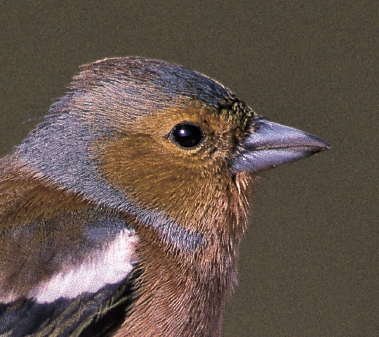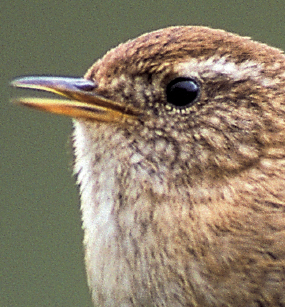
Few birds regularly eat twigs and leaves, but otherwise they have evolved the ability to deal with virtually every kind of food on offer, from minute seeds and insects, through fruits of all kinds, to fish, flesh and carrion.
If you have a pond that attracts herons and perhaps kingfishers, you can watch the birds going through the whole menu in your garden, and it will become very obvious that each species of bird has its preferred kind of food. For example, you will not see swallows dragging worms from the lawn, blackbirds streaking across the sky to snatch insects in full flight, or herons digging their beaks into fallen apples. And you don’t need a degree in ornithology to appreciate that each bird’s beak or bill is beautifully adapted for its diet and the chosen task.

Colin Varndell
The chaffinch’s beak is not very highly specialized and can cope with a fairly wide range of foods. It is stout enough and sufficiently strong to crack many seeds, but at the same time dainty enough to be able to peck insects from bark crevices.
The members of each family usually have similar diets, and therefore similar beaks, although there are plenty of exceptions to this rule. Finch beaks, for example, range from the tiny tweezer-like apparatus of the goldfinch to the hawfinch’s ‘sledge-hammer’, able to crack cherry stones, and the peculiar scissor-like beak with which the crossbill slices into pine and spruce cones. Although all these birds are seed-eaters, they avoid competing with each other by specializing in different kinds of seeds.
Blue tits and great tits eat the same kinds of food but avoid serious competition by foraging at different levels – blue tits mainly in tree branches and great tits on or near the ground. If they did not divide up the food source in this way the great tit would slowly wipe out the smaller blue tit. Swallows and house martins similarly share out the available food by hunting at different levels – the swallows usually feeding within about 30m (90ft) of the ground while the house martins are most likely to be seen above 50m (150ft).

Colin Varndell
The wren specializes in insects and spiders. Its slender beak can pick them up easily and has no trouble in crushing their soft bodies.
It is important to remember the different dietary preferences of birds when feeding them in the garden. Don’t expect all your visitors to be content with bread crumbs and the occasional treat of peanuts. The greater the variety of food you can provide, the larger will be your reward in terms of the number of bird species visiting your garden.
Birds also use their beaks with amazing dexterity to build their nests. It’s not easy to watch birds building their nests – and it is illegal to disturb them – but it can be almost as intriguing to watch them gathering nesting materials beforehand.

CJ Wild bird Foods/David White
Woodpeckers use their powerful beaks like chisels to dig for insects in tree trunks, although the green woodpecker (pictured here) is more likely to feed on ants on the ground. The birds also use their beaks to excavate nest holes in trees.